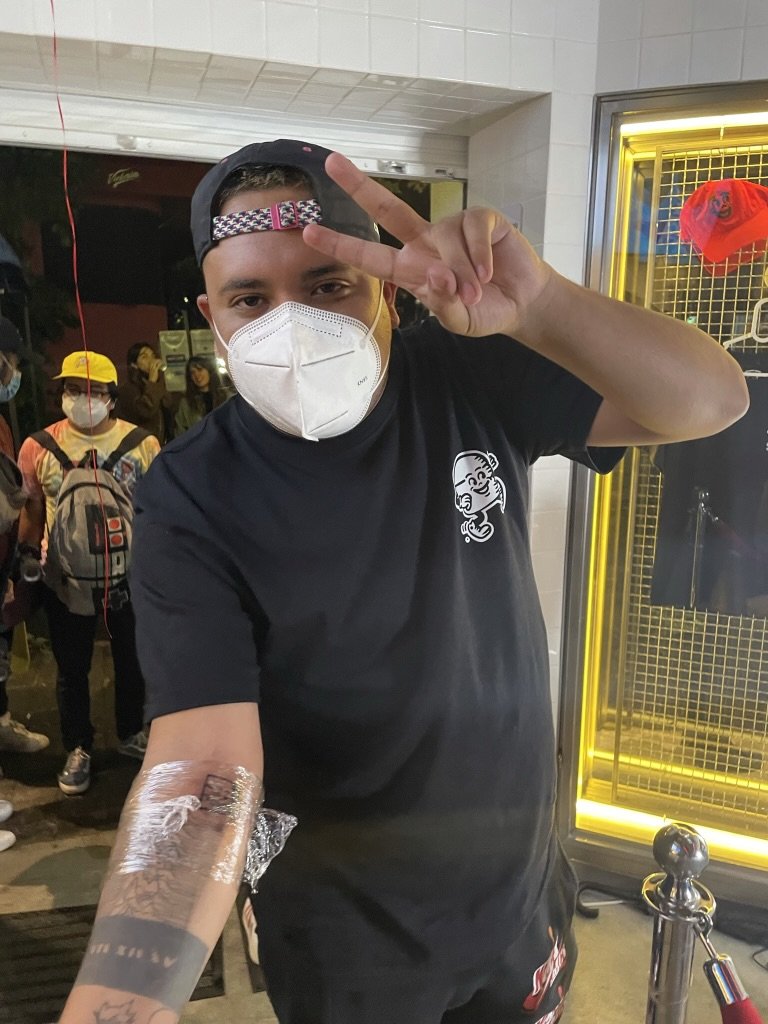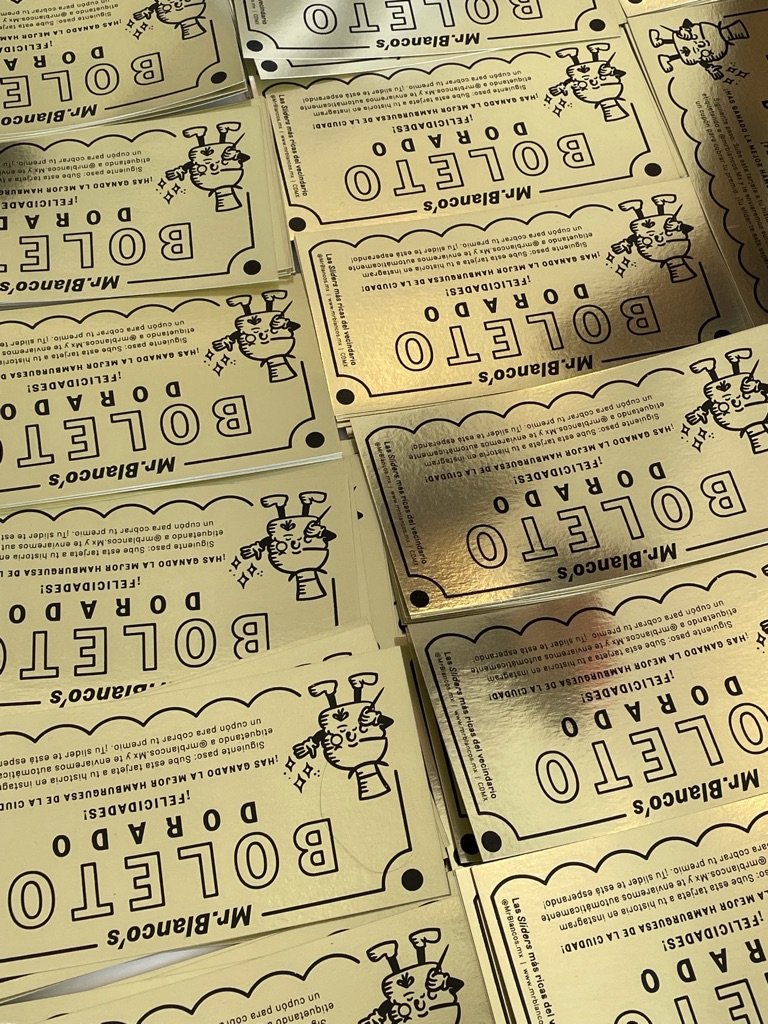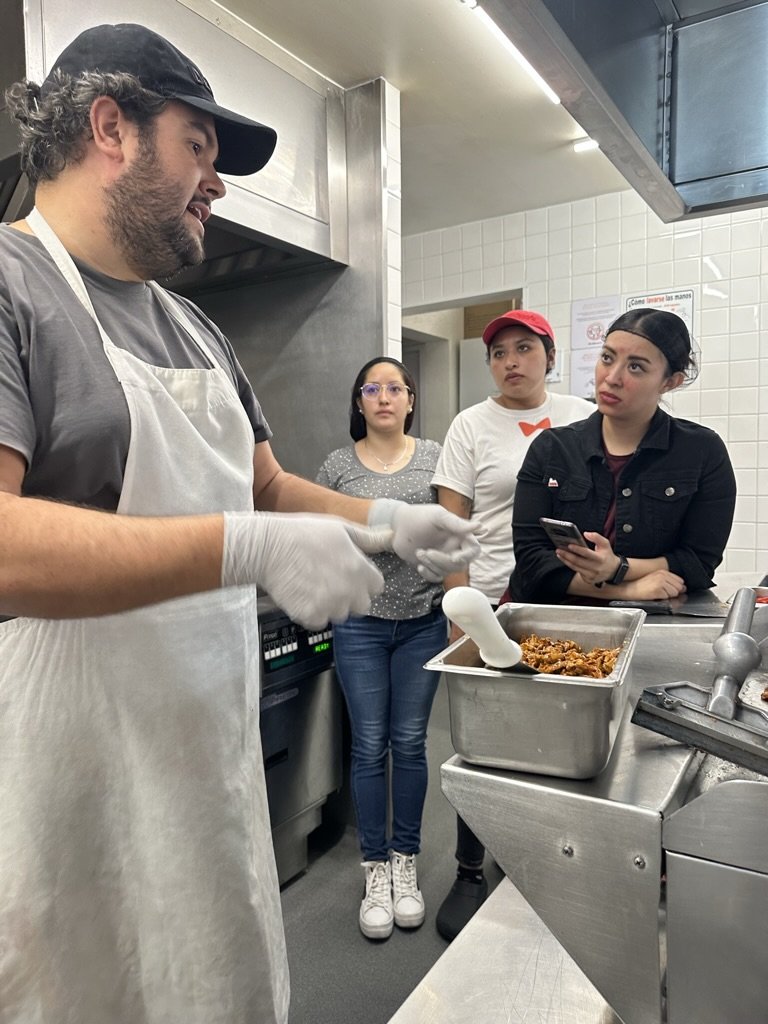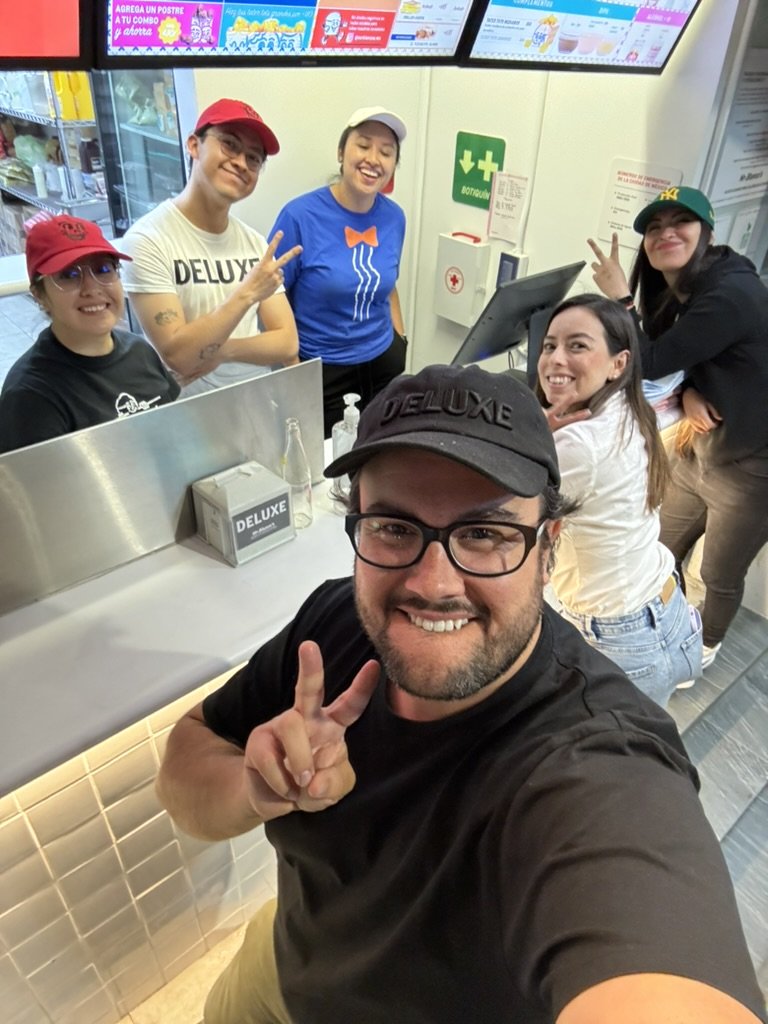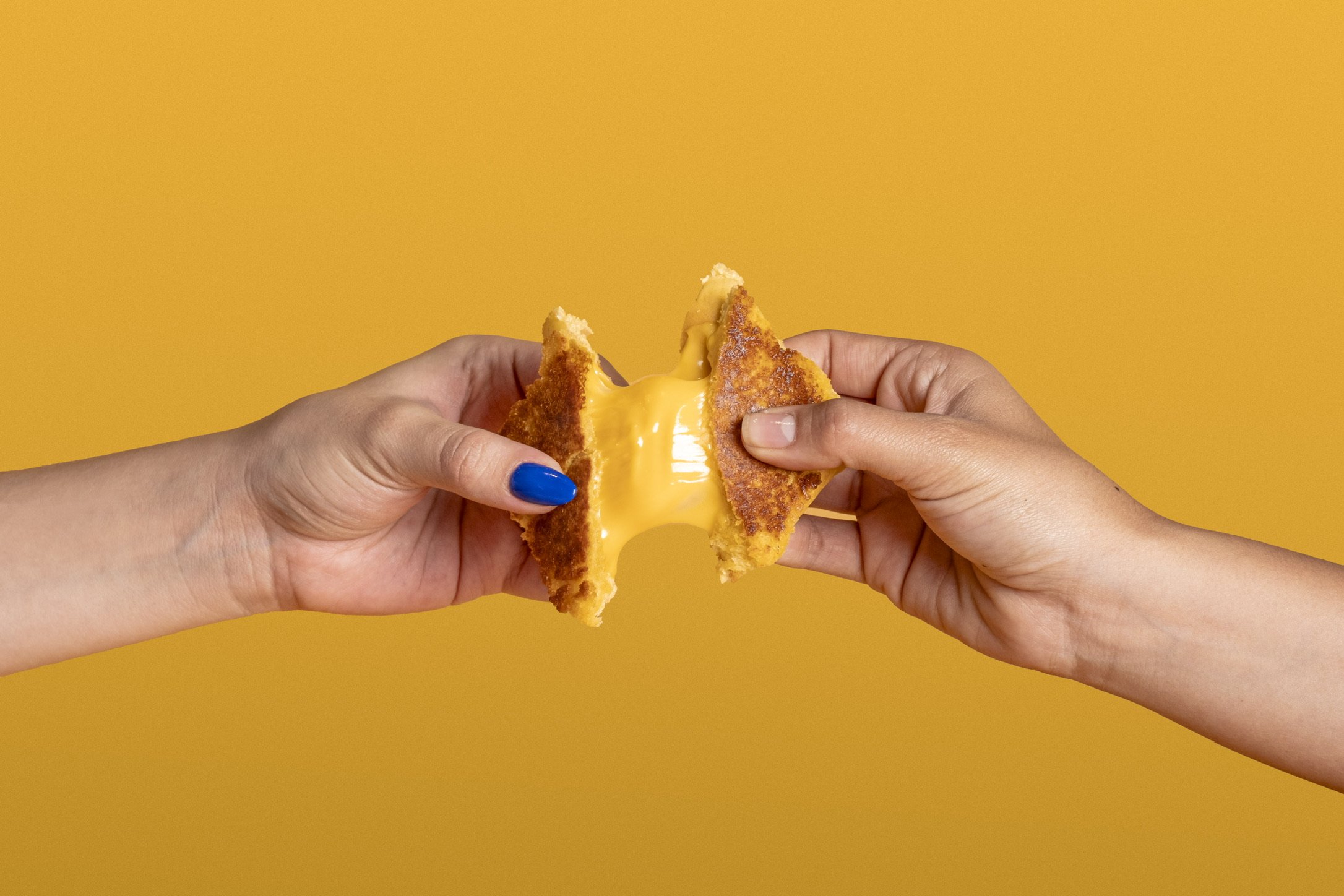
QSR Brand:
Mr. Blanco’s
Overview
Mr. Blanco’s is a quick-service restaurant brand launched in Mexico City in 2020 during the height of the pandemic. Initially focused on American-style sliders, donut holes (“Blanquitos”), and tater tots, the brand quickly resonated and expanded into a multi-unit operation.
I created Mr. Blanco’s from the ground up—concept, name, recipes, systems, packaging, branding, and voice. What started as a one-shop experiment grew into 10 locations (including dark kitchens and brick-and-mortar), with fan loyalty that frankly surprised us: four-block-long lines, 30+ customer tattoos, and an Instagram following that grew past 50,000.
What: QSR burger concept
Where: Mexico City, Mexico
When: 2020 - 2025
Menu Strategy
Mr. Blanco’s launched with a clear point of view: to introduce true American-style sliders to Mexico City—something the market hadn’t seen before.
Each slider followed a strict formula:
USDA beef
Deeply caramelized onions
Martin’s potato rolls (imported from the U.S.)
Salt
No sauces. No substitutions. No customization. The menu also included tater tots (a rarity in the market at the time) and Coca-Cola products. It was intentionally limited, consistent, and built for speed.
I believed sliders could be understood the way tacos are: small, satisfying, and meant to be eaten in multiples. In a culture where ordering three or four tacos is normal, the slider seemed like a natural parallel.
But the idea didn’t fully translate.
Over time, we faced a persistent challenge: sliders were unfamiliar to many guests, and expectations around size didn’t align with reality. People often assumed they were ordering a full-size burger at a great price—and were confused or disappointed when it arrived.
To solve this, we developed combo-based ordering, making it clear what constituted a full meal. Phrases like “Comida para uno” (meal for one) helped educate new guests while reinforcing the brand’s tone.
As the brand gained popularity, we also saw a rise in copycat concepts—many borrowing visual cues and product formats. To stay differentiated and relevant, we began expanding the menu with intention:
A bacon slider for familiarity
A grilled cheese slider, which became a guest favorite
Full-size burgers and crispy chicken (Pollitos)
And eventually, Mr. Blanco’s Bowls—an indulgent, delivery-first line of loaded items developed for Rappi Turbo, a rapid delivery program in CDMX
Even as the menu evolved, we kept signature builds at the core. Every addition was made to balance guest behavior, operational efficiency, and brand clarity.
Packaging & Delivery
Mr. Blanco’s packaging system was designed to balance functionality, branding, and cost-efficiency—especially important in a delivery-heavy market.
I created a modular, interlocking box system that allowed burgers and sides to nest securely inside branded bags. Each core product was paired with a custom-colored box and a unique character—tying flavor, design, and identity together in a way that made the brand feel fun, personal, and memorable.
We treated packaging as an extension of the brand universe, but also as a tool for scale:
The box system reduced movement and temperature loss in transit
Standard sizes streamlined prep, packing, and storage
We partnered with UberEats to sell ad placements on our packaging, cutting burger box COGS by approximately 70%
This wasn’t just about design—it was about delight, efficiency, and extending the brand into every order.
Brand Identity & Character Universe
The name Mr. Blanco’s was a deliberate nod to the origins of American fast food. In the 1920s, chains like White Castle helped restore public trust in ground beef through clean, controlled environments and tiny, consistent burgers. I wanted to honor that legacy while adapting it for Mexico. “White” became “Blanco,” and “Señor” became “Mr.”—a cross-cultural wink that blended nostalgia with irreverence. That sensibility guided the entire project.
Beyond the name, the real heart of the brand lived in the characters.
We began with one—Burger Dude—and eventually built out a full cast of characters tied to our menu. Each had its own personality, tone, and quirks. They appeared on packaging, signage, merch, and in-store graphics. They became the voice of the brand—communicating with guests through humor, expression, and visual storytelling.
An initial Mr. Blanco’s character and design rendering.
Some were hidden in unexpected places. Others climbed the front of our Condesa store as a giant neon sign, drawing crowds and selfies. They were playful, strange, and deeply loved.
Over time, guests formed real attachments. Some collected them. Others wore them. More than 30 people even got them tattooed. For many, the characters weren’t just part of the brand—they were the brand.
Marketing & Guest Engagement
Marketing at Mr. Blanco’s was both strategic and deeply playful. I led all brand campaigns with the belief that if we created joy, the food would sell itself.
We ran a combination of social campaigns, influencer partnerships, paid media (Meta + Google), email marketing, and in-store activations—but the soul of our marketing came from unique experiences that invited guests to participate.
Signature activations included:
Golden Ticket CDMX: A citywide campaign where volunteers hid golden tickets at iconic locations like the Frida Kahlo Museum and Bellas Artes. Winners earned prizes, and the campaign drove significant new foot traffic and digital engagement.
Día de los Muertos Coloring Contest: We partnered with Crayola to create coloring pages based on alebrije versions of our characters, printed directly on delivery bags. Guests—often adult office workers—were given crayons and a chance to play. It turned everyday meals into a moment of creative joy.
7 Days of Christmas: A holiday tradition where every order for a week came with a surprise gift—custom socks, T-shirts, totes, notebooks, stickers, even plush tater tots. We partnered with sponsors to make it possible and ran the program across multiple years.
Accessible Merch Philosophy: All branded merchandise was priced at MX$99, even when sold at cost. This encouraged widespread adoption of the brand by guests across income levels, and helped drive organic reach through wearable brand loyalty.
More than marketing, these campaigns were expressions of the brand’s identity. They created emotional connection, nostalgia, and fun—and turned guests into brand advocates without needing to force the sale.
A freshly tattooed guest
Golden tickets about to be hid
A winning submission from our coloring contest.
Christmas gifts ready for Santa.
Operations & Systems
I designed Mr. Blanco’s kitchen flows, service models, and staffing systems to prioritize speed, consistency, and simplicity—while maintaining the flexibility to evolve across multiple formats and growth phases.
Ticket times averaged around 3 minutes and 40 seconds, with some locations and phases reaching faster service during peak performance periods
Kitchen workflows were optimized through clearly defined production roles and streamlined menus that limited customization and decision fatigue
In select locations, we tested hot-holding systems for high-volume signature SKUs, which improved throughput without compromising quality
One of our stores used kiosk-based ordering, which reduced wait times and allowed for more efficient front-of-house labor deployment
Training documentation and systems were developed to enable quick onboarding and operational consistency across both dark kitchens and traditional storefronts
While each store had slightly different needs, the goal was always the same: keep the experience consistent, fast, and frictionless—for both guests and staff.
Team & Culture
At Mr. Blanco’s, we built a culture around clarity, consistency, and pride in service.
I developed our hiring and training systems in collaboration with our leadership team, with a focus on making the brand scalable without losing soul. We used a combination of in-person onboarding, documented SOPs, and a video-based learning platform (Opus) to standardize training across locations and formats.
We created clearly defined roles, shift flows, and production systems that empowered staff to execute with confidence—even in high-volume environments. Managers were given autonomy and tools to run daily operations while reinforcing the guest experience standards we set from day one.
Staff retention was one of our proudest achievements—several core team members stayed with the company for 4–5 years, helping to shape the culture as much as the systems did.
Financial Snapshot
Mr. Blanco’s operated across multiple locations and formats, including dark kitchens and full-service brick-and-mortar stores.
Key performance indicators:
MX$36M+ annual systemwide revenue
72% gross margin (28% food cost)
EBITDA margins: up to 27% per unit, 21% company-wide
Capex: ~MX$8M (flagship), ~MX$3.5M (dark kitchens)
12–18 month break-even period across locations
55% in-person / 45% delivery revenue mix in physical stores
UberEats accounted for 62% of all delivery sales
Packaging COGS reduced ~70% through branded sponsorships
Multi-year staff retention across core teams.
Cultural Impact & Guest Obsession
Mr. Blanco’s wasn’t just a restaurant. It was a phenomenon.
At the height of a global pandemic, we built something that gave people joy, play, and connection—when those things felt impossibly far away. The brand struck a nerve. It became something people lined up for—four blocks long, sometimes more—not because of marketing gimmicks, but because it made them feel something.
Guests raced to try every new item. They posed for photos under our neon signs. They wore our merch like team colors. Some tattooed our characters on their bodies. You could stop just about anyone in Mexico City and ask if they knew Mr. Blanco’s—and the answer would be yes.
People had first dates at Mr. Blanco’s who are now married. For some, it was their weekend ritual. For others, it was their first meal back out after lockdown. Everyone had a memory. Everyone had a favorite.
In a market where fast food was typically transactional, we created something immersive—almost theatrical. A full brand world, with humor, color, and joy in every corner. At the time, that level of detail and storytelling simply didn’t exist in Mexican fast food. We changed that.
And we didn’t go viral because we tried to. We went viral because people loved it—and they wanted to share it. The food, the characters, the bags, the feeling of being part of something.
Years later, people still talk about Mr. Blanco’s with awe. Guests. Team members. Partners. Everyone knew we had captured lightning in a bottle—and did it during one of the hardest times in recent memory.
Mr. Blanco’s wasn’t just a brand. It was a burst of joy. A moment. And one people still remember.
While Mr. Blanco’s does not currently have active storefronts, the brand operated across Mexico City’s most iconic neighborhoods, with a mix of brick-and-mortar units and delivery-only locations during its peak.
Physical stores were located in:
Condesa
Cuauhtémoc
Narvarte
Delivery-only dark kitchens operated in:
Del Valle
Mixcoac
Pedregal
Nápoles
Coyoacán
Santa Fe
Satélite
This flexible format allowed Mr. Blanco’s to quickly scale citywide and meet guests where they were—whether in the office, at home, or out on the street.









